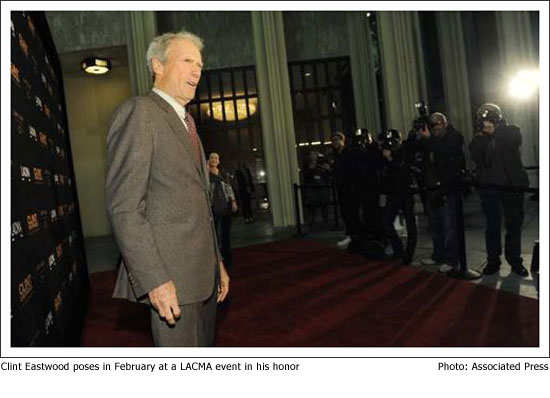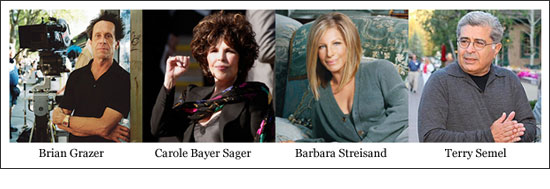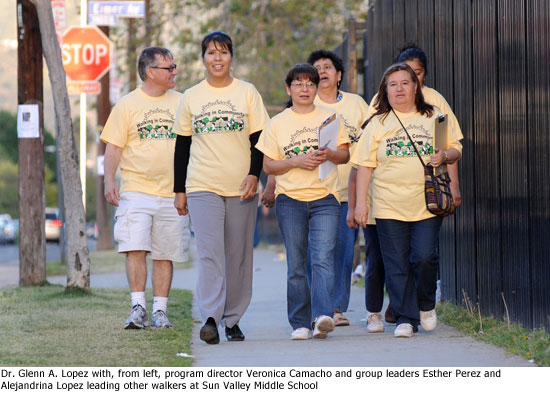A bike week to remember
May 13, 2010
 If you had any doubt that bicycle culture is on a major roll in Los Angeles, just check out the lineup for Bike Week 2010.
If you had any doubt that bicycle culture is on a major roll in Los Angeles, just check out the lineup for Bike Week 2010.
Among the attractions next week are prizes and giveaways, Tuesday’s annual nondenominational Blessing of the Bicycles outside Good Samaritan Hospital, a Downtown LA Bike Ride starting and ending at Olivera Street on Wednesday and free transit rides for cyclists on Bike to Work Day Thursday.
If that’s not enough, you also can pick up (or download) a copy of a brand new Metro map showing more than1,200 miles of local bikeways.
“Combining bus or rail with bicycling trips helps to further reduce carbon emissions and promotes a greener, better LA, “ according to Cosette Stark, Metro’s director of regional communication programs.
Metro’s blog The Source has a good rundown of the festivities here.
Posted 5-13-10
LACMA goes Hollywood
May 13, 2010
In February, the Los Angeles County Museum of Art hosted a rare appearance by Clint Eastwood.
The packed, invitation-only event—featuring a screening of an Eastwood documentary, followed by a question-and-answer session with the actor/director—was a coup for the museum.
But LACMA Director Michael Govan claims no credit for the Eastwood “get.”
“There’s no way in the world I could have gotten Clint Eastwood to come on my own,” says Govan. Instead, he’s quick to give top billing to the museum’s board—specifically, co-chair Terry Semel. The former Warner Bros. chief has enjoyed a two-decade friendship with Eastwood, releasing 20 of the actor’s films at the studio.
Beyond the evening’s glitz, the Eastwood event was a stunning illustration of a new L.A. story unfolding at LACMA. The county’s premier art museum is tapping the town’s most famous hometown industry by increasingly casting Hollywood luminaries for its board of trustees.
Given its home in the entertainment capital, Semel says, LACMA embraces film as a “serious art, a real art,” one that, along with photography, should play an increasingly important role in the museum’s identity. That, he says, “is critical.”
The hope, of course, is also that the tighter ties between LACMA and the entertainment industry will lead not only to a new burst of creative energy but also to a new pool of donors beyond the traditional worlds of real estate and finance. LACMA board members each commit to raising or giving $100,000 per year.
Besides Semel, who also formerly headed Yahoo!, the 59-member board of trustees includes singer Barbra Streisand, producers Brian Grazer and Steve Tisch, Sony Pictures
Chairman Michael Lynton and songwriter Carole Bayer Sager, as well as other top-drawer execs in the worlds of media, sports marketing and video games.
“You put a few major entertainment figures on the board and your Rolodex is just so rich,” says Bayer Sager of the benefits to LACMA. “It’s useful in getting dynamic people who care about the arts.”
Bayer Sager, who joined the board last November and is married to Semel’s former Warner Bros. partner, Bob Daly, says she recently began developing a series of possible public service spots aimed at boosting LACMA attendance, especially among the hard-to-reach younger crowd.
Still in the design phase, she says the first installment—“Have You Seen the Lights at LACMA?”—would feature the iconic “Urban Lights” streetlamp installation along Wilshire Boulevard.
Although the marriage of Hollywood and LACMA seems like a natural fit, the county’s museum hierarchy failed for years to reach out to the entertainment community.
“My New York friends were wondering how come we had so few people on the board from Hollywood and the entertainment industry,” recalls Govan, who took over in 2006.
Although efforts had begun before his arrival to build a better roster of industry powerhouses, Govan says he too wondered why more weren’t being enlisted. He said he was determined to bring more diversity and youth to the board.
In years past, LACMA’s relationship with Hollywood seemed not to be particularly strategic. Suspense actor Vincent Price, a collector, was a trustee in the early 1960s before
LACMA moved to its present campus. Steve Martin joined the board in the late 1980s. That may be why the comedian and art collector, who continues to support the museum, was able to roller skate through LACMA galleries and past a pair of David Hockney paintings in the 1991 film “L.A. Story.”
The new infusion of Hollywood players may prove especially useful as LACMA tries to heal wounds that developed last year when Govan announced that the museum was planning to end its screenings of foreign and domestic films, after a 40-year run for the program. Audiences and revenues were dwindling, he said.
The ensuing outcry—including an open letter from director Martin Scorsese—put Govan on the defensive. The Hollywood Foreign Press Association and Time Warner Cable stepped up to sponsor this year’s film series.
Govan has said that the museum would like to raise at least $5 million to make the program sustainable long-term, and Semel has vowed to do his best to make that happen. Last fall, producer Irwin Winkler hosted what Govan calls a “friend-raising”—rather than fundraising—event at which the museum director sought ideas about how to improve the film program from industry veterans.
And then there’s Semel’s pal, Eastwood. On the night of LACMA’s event in his honor, Eastwood vowed that he’d “reach into [his] pocket, too.” And that’s the kind of role modeling LACMA undoubtedly is happy to see.
Posted 5-13-10
Orange Line workers take aim at toxics
May 12, 2010
Workers on the Orange Line Extension project are getting the lead out. And the asbestos, too.
Over the course of the next month or so, workers will be removing the substances from 18 buildings among the 45 to be demolished as part of the project to extend the popular rapid transit busway northward. Starting today, May 12, the work will be occurring in the busway’s right-of-way–slightly east of Canoga Avenue between Vanowen Street in Canoga Park and Lassen Street in Chatsworth—between 6 a.m. and 4 p.m. on weekdays.
“There’s no risk to the public because the contractor will have 100% containment,” says Scott McConnell, Metro senior construction manager on the project. All work will take place indoors, with continual air monitoring to make sure no toxics escape.
He says next steps include the actual demolition of the buildings, clean-up of drums of oil and paint cans left behind by several of the relocated businesses and excavating and removing contaminated soil along the one-time railroad line.
When the entire project is finished in the summer of 2012, the Orange Line Extension will extend the bus line four miles northward from Warner Center to its final destination between Devonshire and Lassen streets in Chatsworth. The line averages about 22,000 boardings each weekday now and is expected to reach 45,000 a day by 2030.
Car and foot traffic along Canoga Avenue will not be affected by the current abatement work. And there won’t be much to see.
McConnell says Metro asked the contractor: “Are there going to be guys in moon suits walking around with instruments?”
The answer was no.
Posted 5-11-10
Cuts spell needed end to literacy program
May 12, 2010
 This is one kind of bookkeeping that the Los Angeles County Public Library does not relish.
This is one kind of bookkeeping that the Los Angeles County Public Library does not relish.
Library executives, like their counterparts in other departments, are being called on to help the county close a $500-million budget deficit for the coming fiscal year. For the library, this means reducing hours at some branches and ending its long-running Adult Literacy Program—a move that would seem, on the surface, to run counter to a library’s calling.
In reality, however, the elimination of the literacy program was overdue, according to County Librarian Margaret Donnellan Todd.
“I’m not happy to make any cuts,” Todd said Wednesday as the Board of Supervisors began hearings on the proposed 2010-2011 budget. “But this one, I think, was best for taxpayers.”
The program, which served between 200 and 250 participants, cost the library $555,000 a year. That price was hard to justify, Todd said, because the program was based on an outdated state model from the 1980s that emphasized one-on-one tutoring and failed to incorporate advances in technology and teaching.
During the past two decades, the participants also changed dramatically, a change that Todd said was not reflected in the program’s approach. In earlier years, she said, most people seeking adult literacy services simply had not learned to read. Today, most participants want assistance in improving their skills in English as a second language. “That’s a huge change from the ‘80s,” she said.
 Complicating matters, some participants also had “significant learning disabilities” and were referred to the library’s literacy program from adult schools and other outside agencies, Todd explained, adding that the library staff does not have the necessary skill set for that kind of challenge.
Complicating matters, some participants also had “significant learning disabilities” and were referred to the library’s literacy program from adult schools and other outside agencies, Todd explained, adding that the library staff does not have the necessary skill set for that kind of challenge.
“We can’t give false expectations,” she said. “We need to be more honest. We’re not the right place for these people.”
Todd said that, beginning with the new fiscal year in July, the nine staffers assigned to the adult literacy program will be transferred to other areas of the library system. The program’s participants will be referred to private agencies, said Todd’s chief deputy, Terri Maguire. The library also will continue to offer literacy services on its computers.
In the longer term, Todd said she and her staff will take a year to reevaluate how it confronts literacy issues in ways that are cost effective and programmatically successful.
A key component of that effort will likely be to identify the best practices of online adult literacy instruction and implement it throughout the county library system so it can be accessed at home and at individual branches. Todd said the library also might consider partnering with longstanding literacy programs or holding larger classes, rather than the old, costly model of individual tutoring.
Given its costs and shortcomings, why wasn’t the literacy program eliminated sooner?
“Sometimes people think with their heart rather than the hard data,” Todd said. “They want to help. But now’s the time to think with our heads.”
For a more comprehensive look at the library’s literacy plans, as described in a letter to L.A. County CEO William T Fujioka, click here.
Posted 5-12-10
Another chance to make sure bikes count
May 11, 2010
Cyclists, your time has come. People who leave their cars at home and bicycle to the train station for the daily commute are in the Metro spotlight.
Over the next three weeks, the transit agency will be surveying and counting bicycle usage among rail passengers at 20 stations–those who park their bikes as well as those who bring their bikes onboard.
The effort started today. The names of the stations are not being released in advance in order to preserve the study’s integrity. But if you’re a bike commuter, don’t pass up this chance to roll up and be counted.
Results of the survey, to be conducted by the Los Angeles County Bicycle Coalition, will be used by a team of Metro consultants to “estimate the amount of greenhouse gases saved by bicyclists using Metro rail lines instead of driving.”
Results of another bicycle survey conducted among Orange Line riders earlier this year are being tabulated and will be released soon.
Posted 5/11/10
A big step for Valley walkers
May 7, 2010
The walking doc’s back. And in case you missed him the first time around the block, here are a couple of things he won’t be bringing with him: a pedometer and a drill master’s go-for-the-burn attitude.
In fact, Dr. Glenn A. Lopez, creator of the Walking in Community program now up and running in Sun Valley and Sylmar, thinks the “community” piece of the equation is just important as the exercise itself when it comes to building healthy habits that last.
Lopez is an assistant professor in UCLA’s Department of Family Medicine and president of OnSite Health Solutions, a mobile medical clinic serving uninsured and chronically ill patients. At a press conference Monday, officials from the Health Net Foundation are expected to announce a $200,000 grant to his company to expand his mobile medical care to, eventually, 18 San Fernando Valley locations. Providence Health & Services previously contributed to, and currently contracts with, Lopez as well.
Lopez’s community-based approach to medicine is at the heart of his free walking program. And to get that effort off on the right foot, Lopez started by simply listening.
Before the initial launch of Walking in Community in 2006, he interviewed 200 families to learn more about their interests and attitudes.
“We got some very surprising results,” he says. “Eighty-three percent were very interested in walking with their neighbors around the block if somebody else set it up. It was about getting to know your neighbors.”
For women, that ranked as the No. 2 reason for starting a walking regimen, right behind “health and losing weight.” For men, it was reason No. 1.
Throw in a little motivation in the form of a free yellow T-shirt for people who’ve walked six times, and you’ve got a runaway—make that walkaway—success.
Eventually, more than 3,000 people took part—40% of them children.
“We had whole families walking together,” Lopez says. “These walking groups became like a community…And we found that if people walked for two weeks, they had a 75% chance of still walking three months later.”
Funding for the original effort ran out in 2008, but now the program is back, underwritten with two $25,000 grants—one from the county, on a motion by Supervisor Zev Yaroslavsky, and the other from Los Angeles City Councilman Tony Cardenas.
Groups currently are walking three times a week at three San Fernando Valley sites: Sun Valley High School, Sun Valley Middle School and Sylmar High School.
“It’s great,” says Carmen Holguin, 42, who was among those promenading around Sun Valley Middle School on a recent evening. “You move, you feel good, the stress is less. Your weight is less, too.”
Family groups are out in force. One extended group includes a 5-year-old on a scooter, her mother, three aunts and her 69-year-old grandmother.
No one, it seems, is walking alone. “They know each other, and it’s safe here,” says one of the leaders, Alejandrina Lopez, who was there with her daughter, Stephanie, a 6th grader.
“A lot of [original participants] are coming back,” says Veronica Camacho, the program’s director. “They were begging us to come back.”
Lopez says the idea for the walking groups grew out of his earlier studies of programs to combat asthma, childhood obesity and diabetes—a disease that is prevalent but often untreated among many in his predominantly Latino clientele.
Lopez, who received his medical degree from Cornell and did his residency at Cook County Hospital in Chicago, also worked for 10 years in rural Guatemala, administering medical care to workers on coffee and banana plantations from the back of his pickup truck and eventually building a network of 94 work-site clinics. As poor as his patients there were, he says, they “had the most important thing”—a sense of connection.
Lopez, 53, who lives in Northridge with his wife and two children, says he thinks his communal exercise program can help combat social isolation that leads to depression, a common problem among those he serves here in Los Angeles.
“Isn’t it ironic and isn’t it fantastic,” Lopez says, “that our marginalized communities are showing a way to come together and support each other?”
He also believes that small steps can be incredibly powerful.
“If I had to rate what is the most important thing about the walking, it is to welcome people, to be congenial and tolerant. This is a way of breaking the isolation that people are living in.”
And as for fancy hi-tech equipment? You can leave that at home.
“I’m against the use of pedometers,” he says. “If you’re 150 pounds overweight, OK, you’ve got to do 10,000 steps. They do 100 and already their heart is racing. They give up.”
But remember the yellow shirt.
“People want their T-shirts,” Lopez says. “They want that sense of doing something bigger, being a part of something.”
Posted 5-07-10
All about the bike in Long Beach
May 6, 2010
 Long Beach is gearing up for a cyclist’s dream weekend. The Long Beach Bike Festival is set to turn Downtown Long Beach into a bicycling haven this weekend, featuring events ranging from the Fixed Gear Fest to a Bicycle Grand Prix Beach and a CYCLESTYLE Fashion Show. The weekend-long event will also feature vendors, music, and food for all attendees. The festival is part of Bike Long Beach’s campaign to brand Long Beach as the most “cycling friendly urban city in the United States.” To register for races or to learn more about the event, click here.
Long Beach is gearing up for a cyclist’s dream weekend. The Long Beach Bike Festival is set to turn Downtown Long Beach into a bicycling haven this weekend, featuring events ranging from the Fixed Gear Fest to a Bicycle Grand Prix Beach and a CYCLESTYLE Fashion Show. The weekend-long event will also feature vendors, music, and food for all attendees. The festival is part of Bike Long Beach’s campaign to brand Long Beach as the most “cycling friendly urban city in the United States.” To register for races or to learn more about the event, click here.
Posted 5-06-10
How to hook a halibut
May 6, 2010
 The county Department of Beaches and Harbors is trying to reel in a new generation of aspiring anglers—hook, line and sinker.
The county Department of Beaches and Harbors is trying to reel in a new generation of aspiring anglers—hook, line and sinker.
The 2010 Shore Fishing Program gets underway at Dockweiler State Beach this Sunday, May 9, with outings also scheduled for Sunday, May 16 and Sunday, May 23 from 8 a.m. to 10 a.m.
The lessons are an offering of the new Dockweiler Youth Center and are open to would-be anglers of all ages throughout the county. Each session is capped at 10 participants. Those under 12 must be accompanied by an adult, and everyone over 16 needs a valid California fishing license.
While all fish caught are indeed edible, Michael Blenk, Recreation Services Leader for Dockweiler, advises tucking in with caution.
“There are differences of opinion regarding Dockweiler’s water,” he said.
Regardless of the dining opportunities, everybody gets to use free fishing gear during the lessons.
Participants will learn the basic techniques of shore fishing, including how to cast and reel in. Blenk, who leads the expeditions, says he sees at least two fish caught per outing. Among the types of fish commonly caught are surfperch, halibut and even leopard shark.
The Youth Center was opened in October, 2009 and currently offers meditation, yoga, and bird watching classes in addition to fishing lessons and expansive views of the California coast. Blenk says that the fishing lessons and other Youth Center activities serve a purpose that goes beyond fun in the sun.
“[Kids should have] an appreciation for the beach and an understanding that it is there for them and they need to take care of it,” he said.
To register, contact the Dockweiler Youth Center at (310) 726-4128.
Posted 5-06-10
Now, it’s your turn to weigh in on the budget
May 6, 2010
The Board of Supervisors on Wednesday will convene a meeting to hear public comments on the county’s proposed 2010-11 budget. Reflecting three straight years of pressure from the prolonged economic downtown, the $22.7 billion proposed budget released last month by CEO William T Fujioka aims to close a $510 million deficit by dipping into county reserves, reducing some services and cutting labor costs.
Among the speakers at Wednesday’s session are likely to be the heads of county departments as well as union representatives discussing how proposed job cutbacks will affect county workers. Fujioka’s budget proposes the elimination of 1,374 unfilled but budgeted positions. It also calls for 131 actual layoffs, though in announcing the budget Fujioka predicted the ultimate number would fall below 100. If Supervisors passed the budget as initially proposed, total county employment would fall from 101,113 to 99,736.
See our earlier story covering the highlights of the proposed budget.
The hearing will get underway at 9:30 a.m. at the Board Hearing Room in the county Hall of Administration.
Posted 5-06-10















 Check for the latest closure information
Check for the latest closure information








